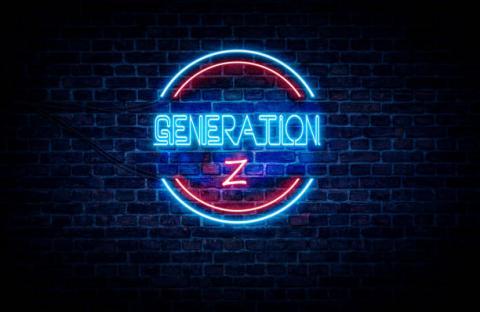

Gen-Z (people born between 1996~2010), is found to have more diversified needs, higher consumption potential and stronger national self-esteem. They have gradually become the major consumers whose consumption habits already brought a huge impact to the global market. As the expert in verbal branding, we notice that Gen-Z is also shaping the new trend of brand name, brand communication style and tone of voice. Simple Reason: Gen-Z has formed its own unique language style. Sometimes the post-80s and 90s may have real problems understanding Gen-Z’s words and asking themselves: do we speak the same language?
You are what you say. Let’s first deep dive into Gen-Z’s language system and find out the mystery behind it, and then connect it with verbal branding.
Compared to the previous generations, as digital natives, Gen-Z can access an online world with fewer boundaries and diversified language, knowledge and information. They grow and live with diversity and abundance. The most important feature of their language is “hybrid”. In communication, they combine various elements altogether. E.g. different languages (Chinese, English or others), letters, symbols, numbers, emoji, etc.
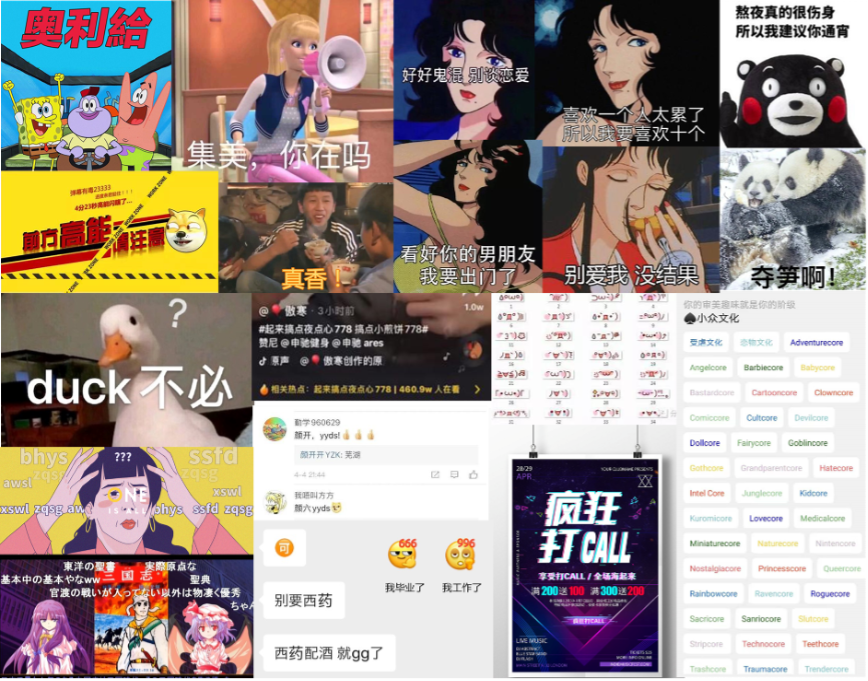
With so many language elements, Gen-Z is unceasingly working on new vocabulary creation, such as:
细思极恐 [xì sī jí kǒng] means a second thought incurs profound fear. It is a new idiom that imitates the structure of the traditional idiom.
男票女票 [nán piào nǚ piào] means boyfriend/girlfriend. 票 [piào] (ticket) is a continuous reading of the ending sound of Chinese pronunciation of “朋友” [péng yǒu] friend.
小确幸 [xiǎo què xìng] means tiny and solid happiness. It is an abbreviation of 微小而确实的幸福 [wēi xiǎo ér què shí de xìng fú].
兄dei [xiōng dei] means brother. It is like the Chinese pronunciation of “brother” in the northern dialect.
工具人 [gōng jù rén] (tool person) imitates the structure of “工具书” [gōng jù shū] tool book. It refers to someone who is like a tool. It is a bit like the errand boys/girls.
柠檬精 [níng méng jīng] a vinegary lemon. “Jealous” tastes sour in Chinese culture. This new word refers to people who are jealous or envious of others.
It is a truth-revealing moment by seeing so many different language skills applied in these “new words” which all come from the daily life of Gen-Z: TV drama lines, media topics, social phenomenon, social platform information and so on. Three keywords can summarize the core features of Gen-Z’s language system :
Name is the first touchpoint for the brand to connect with the target audience. It is our observation that the names of many brands emerging in recent years (mostly established after 2015) are a perfect reflection of Gen-Z’s language system: Hybrid name components, Diversified and fun naming techniques.
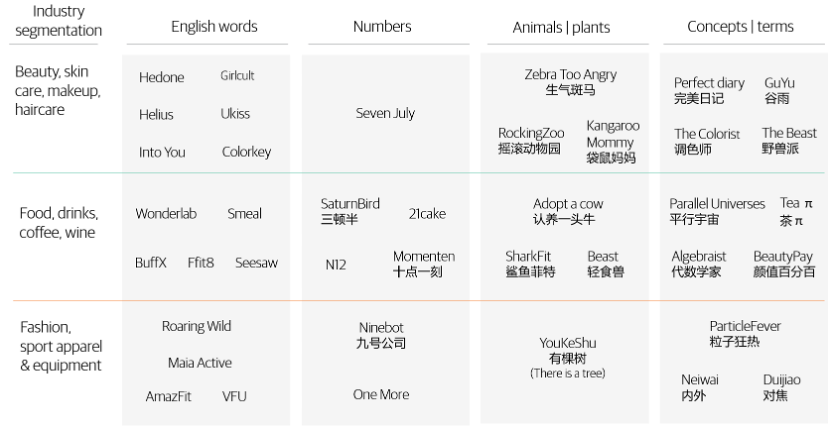
Let’s first take a look at what are the components of these brand names facing Gen-Z. First of all, we can see many brands prioritize alphabetic names even if they target the Chinese market. These names closely follow the characteristics of Gen-Z. For example, BuffX, a healthy functional soft sweets brand, is named after a common game term. Buff usually refers to adding some kind of “magic” to a character that can enhance its own abilities. X contains a sense of high-tech as an English letter; meanwhile, it is also a linking symbol used in the context of co-branding.
Names mixed with English and numbers are also highly popular. For example, Ffit8 protein bar, the initial letter F stands for Food, which is intended to convey Food fit me well. 8 is the homophone of “发” [fā] in Chinese, meaning “get rich”, an auspicious character. Another example is the N12 tangerine peel drink. Here N stands for Nature; 12 stands for December, which refers to the best time to pick the raw tangerine peel. Additionally, π in the name Tea π (tea beverage brand) renders the association of infinite possibilities. Through these examples, we see the application of various components in brand names and the novelty in character selection. Needless to say, these new Chinese brand names are more connected with the lifestyle of Gen-Z.
In terms of naming techniques, diversification and fun come first for Gen-Z brands. One might be utterly puzzled by the boutique coffee brand name 三顿半, which literally means “three and a half meals”, at the first sight. In fact, “three” refers to three meals a day, “half” refers to a half meal which stands for the nourishment for the mind, and here is a cup of coffee. 生气斑马 Zebra Too Angry, a newly launched Chinese hair dyeing brand, here 生气 stands for “HAIR ALIVE” and 斑马 Zebra is the symbol of distinction, freedom and vitality. The sportswear brand 暴走的萝莉 Rage Lolita builds a highly unique brand image by leveraging the contradiction of Rage and Lolita, since this combination is totally out of blue. It is also worth mentioning that the length of these emerging brand names has already made a breakthrough from 2-4 to 5 characters, such as 摇滚动物园Rocking Zoo, 暴走的萝莉 Rage Lolita, 颜值百分百Hundred Percent Beauty, 认养一头牛 Adopt a cow. These longer names are more capable of telling a vivid story. Different from traditional brand names, these names can even play the role of brand tagline or brand story. There is no longer a clear line in between the different branding identities.
Next, let’s see how the emerging brands convey their belief and philosophy through brand communication, to resonate with Gen-Z.
1)Contents are more focusing on cultural, artistic and spiritual levels
According to《Gen-Z Consumption Report》〔¹〕, Gen Z’s consumption needs grow rapidly in categories related to culture and art, such as Chinoiserie, Hanfu, AcToys, garage kit, ACGN cosplay, art exhibition, etc. Statistics show that nearly 90% of Chinoiserie fans on Bilibili are Gen-Z, while the spending on AcToys and garage kits on Tmall’s hot IP list has also exploded dramatically in recent years. These trends have provided a rich and solid foundation for the progression and transformation of brand communication content.
The new domestic beauty brand Hedone is one of the outstanding models. Its name was inspired by Hēdonē, the goddess of pleasure in ancient Greek mythology. The Tmall flagship store is titled “Hedone#Fashion”, delivering an effortless ironic attitude towards the stereotype fashion. This attitude resonates perfectly with the confident, bold and daring Chinese young generation. The brand’s product series are composed of “Seven Sins”, “Modern Times”, and “1986 Series”〔²〕, all of which are rooted in film art. The common thread of the series is “hedonism”. Among them, “Seven Sins” appears especially bold and differentiating. Derived from Catholicism, seven sins depict human sins into arrogance, jealousy, rage, greed, etc. The concept is presented in a short video called “Grand HEDONE Hotel”, which encourages people to truly see and embrace themselves and eventually attain freedom and liberation.
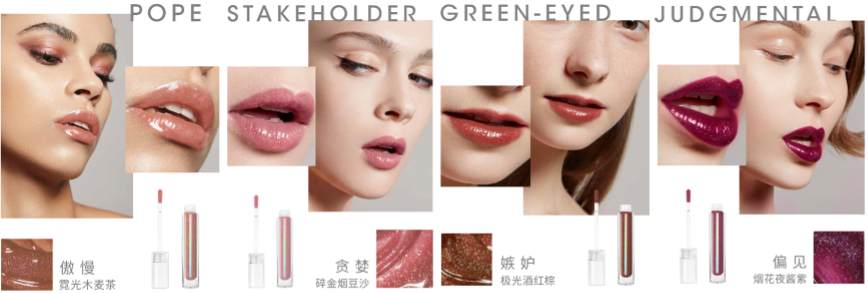
Another newly launched beauty brand Girlcult also carries a distinctive artistic style. Its product series include Sakura Momoko, Universe, Mountains and Seas, Utopia, etc. The names and contents perfectly fit the brand manifesto “Girlcult is like a pocket of wonderful stories, fitting with every wild fantasy”. For example, the product line “Mountains and Seas” is taken from the ancient myths and legends in the Chinese book “Shan Hai Jing”〔²〕. As for the product names, they all present incredible imagination against the exquisite colors and images.
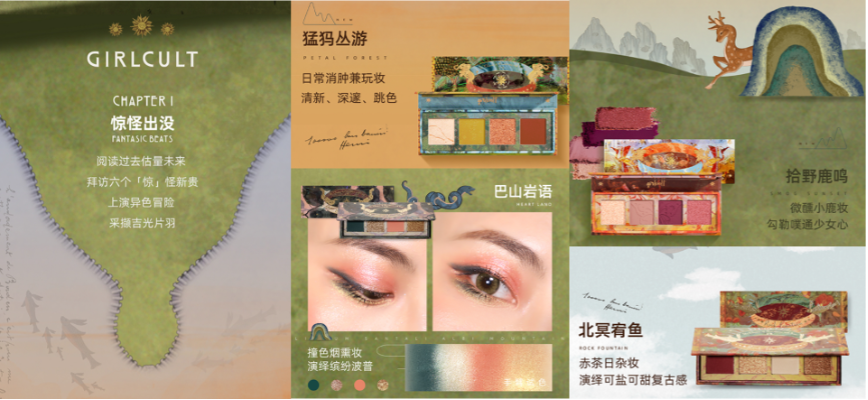
Girlcult Mountains and Seas product series
Speaking of art and culture, another compelling brand is The Beast. The name itself represents a painting style that prevailed in France in the 1900s. It tends to present a straightforward, unpolished and intense art style that exactly fits into the founder’s floral decoration style in her start-up days. Nowadays, the Beast product series has expanded to all lifestyle-related categories. But the core brand philosophy is always to bring art, aesthetics and delights into life. For example, The Beast cooperate with V&A Museum 〔²〕 (Victoria and Albert Museum, located in London, the world’s largest museum of decorative arts and design) to present co-branding product series include “Modern Times”, “In the Mood for Love”, “Matisse”, and so on.
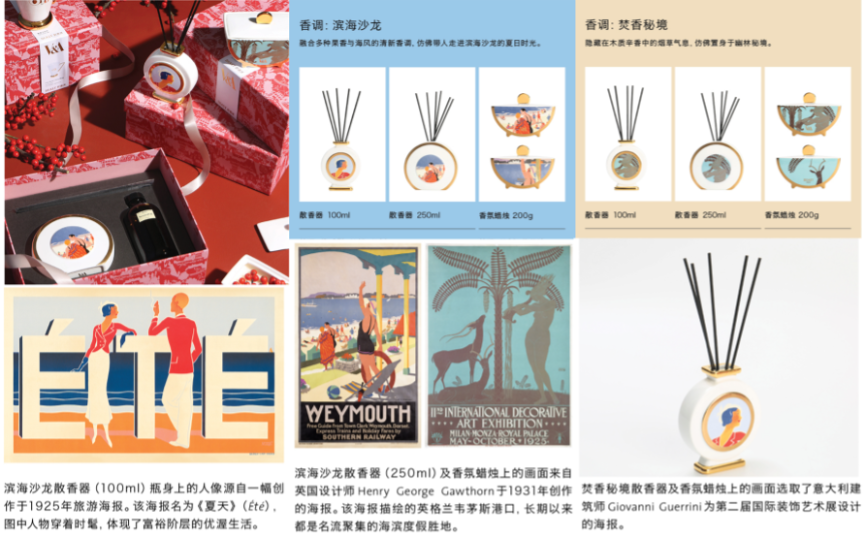
While for some brands, they are one more step closer – directly transform the commodity series into works of art. For example, in the case of the popular Gen-Z brand Off-White, it tried to turn ordinary goods into eye-catching art pieces by using double quotation marks on some products, like the “SCULPTURE” bag, “FOR WALKING” shoes. In this way, it urges people to rethink the value of commodities while challenging the commonly seen concepts.
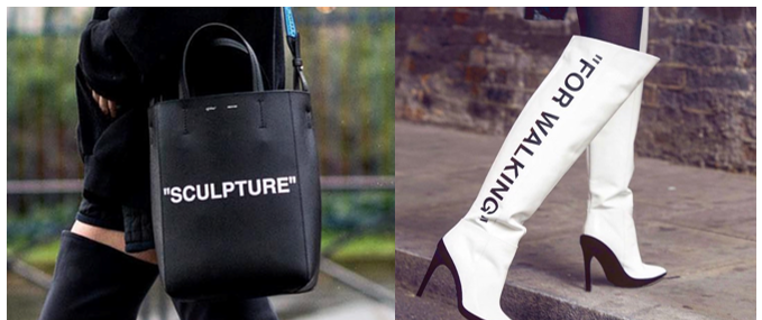
2)Personified communication tone of voice achieving real connection with consumers
In the era of full digitalization, the distance between Gen-Z brands and consumers is closer than ever through highly frequent and fun interaction via social media platforms such as Weibo, WeChat, Red, Bilibili, Douyin, Taobao live broadcast, etc.
Typical cases are in categories like food, beauty and personal care, such as Wonderlab (healthy food), Zebra Too Angry (hair dyeing products), Rocking Zoo (personal care products), etc.
The communication contents always keep up with the online buzzwords. And various expression skills such as letters, numbers, homophone, pun, exaggeration, rhetorical questions, emoji quotes, etc. are surging endlessly across different social media platforms, of course, all closely linked with the daily language used by Gen-Z.
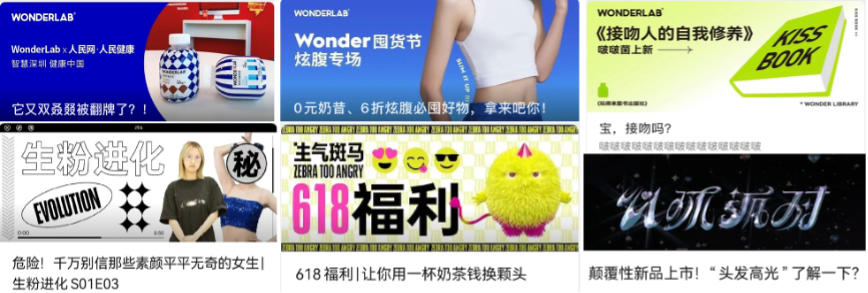


Gen-Z is undoubtedly a unique generation. The “Hybrid Labyrinth” language style seems simple and straightforward, yet carries sophisticated and profound meaning. This paradox also sequentially influences the verbal system of the emerging brands.
From the newly emerging Gen-Z brands in recent years, we learn that they often appear in a non-conventional way. Their brand communication is more focused on the cultural, artistic and spiritual levels with a personified tone of voice, aiming to connect with the target audience with zero distance.
The great variety and diversity in naming components, techniques, and communication style on online touchpoints have indeed been demanding for brand verbal strategy work. However, facing the fast-growing Chinese consumer market, if a brand could master Gen-Z’s language styles & preferences, and optimize its corresponding brand verbal strategy, it will absolutely bring lasting and productive long-term rewards.
〔¹〕Data source: CBNData consumption big data
〔²〕Source: Brands’ Tmall flagship stores, WeChat accounts, official websites, Red accounts, Instagram official accounts
A Labbrand Group Company © 2005-2024 Labbrand All rights reserved
沪ICP备17001253号-3* Will be used in accordance with our Privacy Policy
To improve your experience, we use cookies to provide social media features, offer you content that targets your particular interests, and analyse the performance of our advertising campaigns. By clicking on “Accept” you consent to all cookies. You also have the option to click “Reject” to limit the use of certain types of cookies. Please be aware that rejecting cookies may affect your website browsing experience and limit the use of some personalised features.